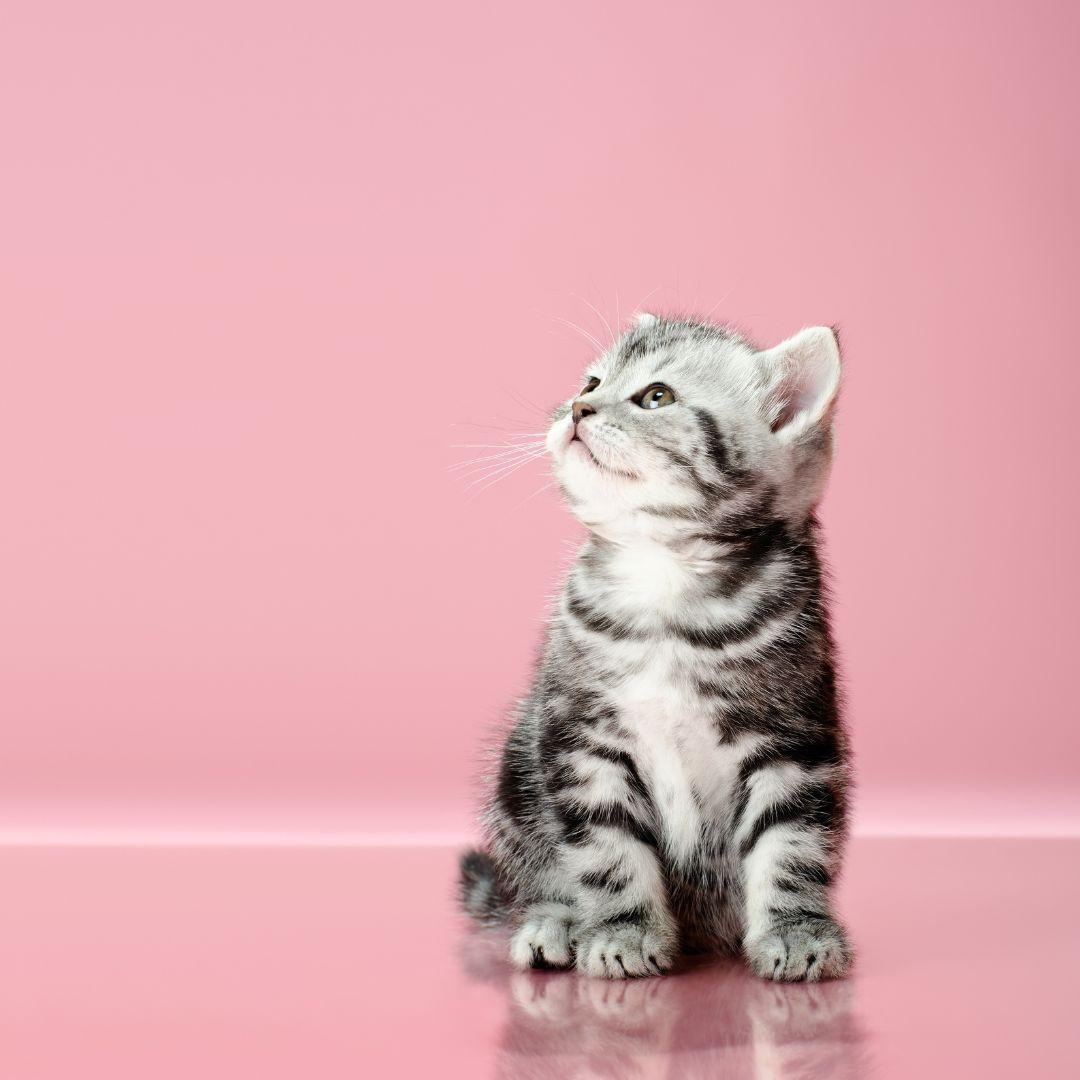
- posted: May 02, 2023
House Training for Kittens and Cats
Nov 30, 2008 | Updated by LifeLearn on Nov 30, 2020
Learning to eliminate in the chosen area is a crucial skill for pet kittens and cats. Elimination outside the litter box is the most common problematic behavior reported by cat owners, so a proactive approach is critical for a successful life shared by people and their pets.
Getting Started: What Cats Like and Need
Abundant research has been done about what most cats prefer when it comes to a latrine. Most cats prefer:
- unscented, fine grit clumping style litter
- a deep box with at least 3” of digging material
- a large area inside the box with
- enough room to walk in and turn around without touching the sides or top
- enough room to eliminate and dig without touching the sides or clumped waste
- boxes located in quiet areas that are easily accessible
- uncovered boxes, but this can vary by individual
Storage containers with an entry door or large sweater boxes often make excellent litter boxes, but keep in mind that kittens and senior cats need lower sides to enter and exit boxes easily. Larger homes and homes with multiple cats will need multiple latrine locations; multiple boxes together in the same area or same room count as one box. And finally, cats who eliminate while standing may need a box with high sides to prevent urine or feces falling outside the box when the cat is inside the box.
Every cat is an individual, so if you find that your cat does not prefer these suggestions, talk with your veterinarian about what to try.
How often do I need to clean the litter box?
Most cats are by nature fastidious. Cats spend a lot of time grooming themselves, and naturally prefer a tidy bathroom as well. Consider a human going into a public restroom: if someone before you fails to flush, do you proceed and use the toilet? Doing our best to keep the litter clean and appealing to cats is one of the most important factors in maintaining good elimination habits in our pets.
Every Day: Scoop all clumps. Some cats prefer the litter to be scooped even more frequently.
Every Week: Empty all litter and any residue from the box, refill with clean litter.
Every Month: Empty all litter and thoroughly scrub the box with hot water and mild soap before refilling. Some cats prefer this to be done weekly.
Every Year: Completely replace the litter box.
How do I train my kitten or cat where to go?

Most kittens and cats will naturally eliminate in litter, as they tend to prefer loose granule substrates.
When you come home with your new kitten or cat, introduce them first to the room where the litter station is. Close the door to the room and stay with the cat and interact calmly, encouraging them to explore the room. Once they have explored the room, open the door and let them begin to explore larger areas of the home under supervision. If you see the cat sniffing, pawing at the floor, circling, or looking for a private area, quietly carry or entice them back to the litter station to help them remember where it is.
It is not usually necessary to confine cats to the room with the litter box, as long as it is readily accessible. Make sure the cat can easily get to and from this location without having to pass other cats, jump, go up or down flights of stairs, etc. Ensure the door to the room with the litter is kept open unless the cat is confined there so they always have access to the bathroom.
What do I do about mistakes?
If you are supervising your kitten or new cat and they start to eliminate outside the litter box, interrupt them using a cheerful voice, a whistle, or clap your hands. Guide your kitten or cat quickly to the right spot and then allow them quiet and privacy to finish eliminating.
If you find a mistake after the fact, simply calmly and quietly clean the area, and resolve to better supervise the kitten in the future. Make sure to clean the area thoroughly, as cats have a very acute sense of smell and will be more likely to use the same area in the future if any odor of urine or feces remains on the surface.
"Do not punish your kitten or cat for making a mistake."
Do not punish your kitten or cat for making a mistake. Never rub a cat’s nose in an elimination, strike, or swat your cat. Punishing your pet for a natural act can make them think they should never toilet near a person and cause them to become secretive or fearful about elimination.
If your cat repeatedly eliminates outside the litter box:
- Discuss this pattern with your veterinarian promptly, as eliminating outside the box is a common symptom of many different illnesses.
- Double check your cleaning schedule and consider increasing your cleaning efforts.
- Ensure the box is big enough, in a quiet but easily accessed area, and that enough elimination locations are available.
- If you have more than one cat, ensure there are enough litter stations spread out through the home that each cat can use them undisturbed without "waiting in line." The rule of thumb is to have at least one more litter box than the number of cats in the household (2 cats = at least 3 litter boxes).
- Consider a "Litter Box Cafeteria." Set up several litter boxes side by side, each containing a different litter texture. Monitor the litter use for a few days. Your cat will use the substrate they prefer most often. Whichever litter is used most frequently should be provided on an ongoing basis.
In addition to the above suggestions, keep a journal where you track your cat's mistakes. The journal should include:
- Where the elimination occurs (right beside the box, in another room, near a door or window, etc.).
- The type of surface used to eliminate on (vertical or horizontal, smooth, carpet, dirty laundry, etc.).
- If the mistakes are urine or feces or both.
- The quantity of urine or feces (nickel- or dime-sized spot, full bladder, stream down the wall, etc.).
- The frequency that mistakes are occurring.
- When the mistakes are occurring (in the night, when you are out, etc.).
These details can offer great insight for your veterinary team in helping resolve litter use troubles.
Lastly, if your cat is ever seen frequently going to and from the litter box, standing or squatting in the litter for prolonged periods, posturing or standing in the litter box and vocalizing, these are all urgent concerns and require immediate veterinary attention.
Contributors: Monique Feyrecilde, BA, LVT, VTS (Behavior)
© Copyright 2020 LifeLearn Inc. Used and/or modified with permission under license.
Office Hours
Closed for lunch 12pm to 1pm. For afterhours call 306-378-2252 for the emergency veterinarian on call.
8:00 am - 5:00 pm
8:00 am - 5:00 pm
8:00 am - 5:00 pm
8:00 am - 5:00 pm
8:00 am - 5:00 pm
Closed
Closed

